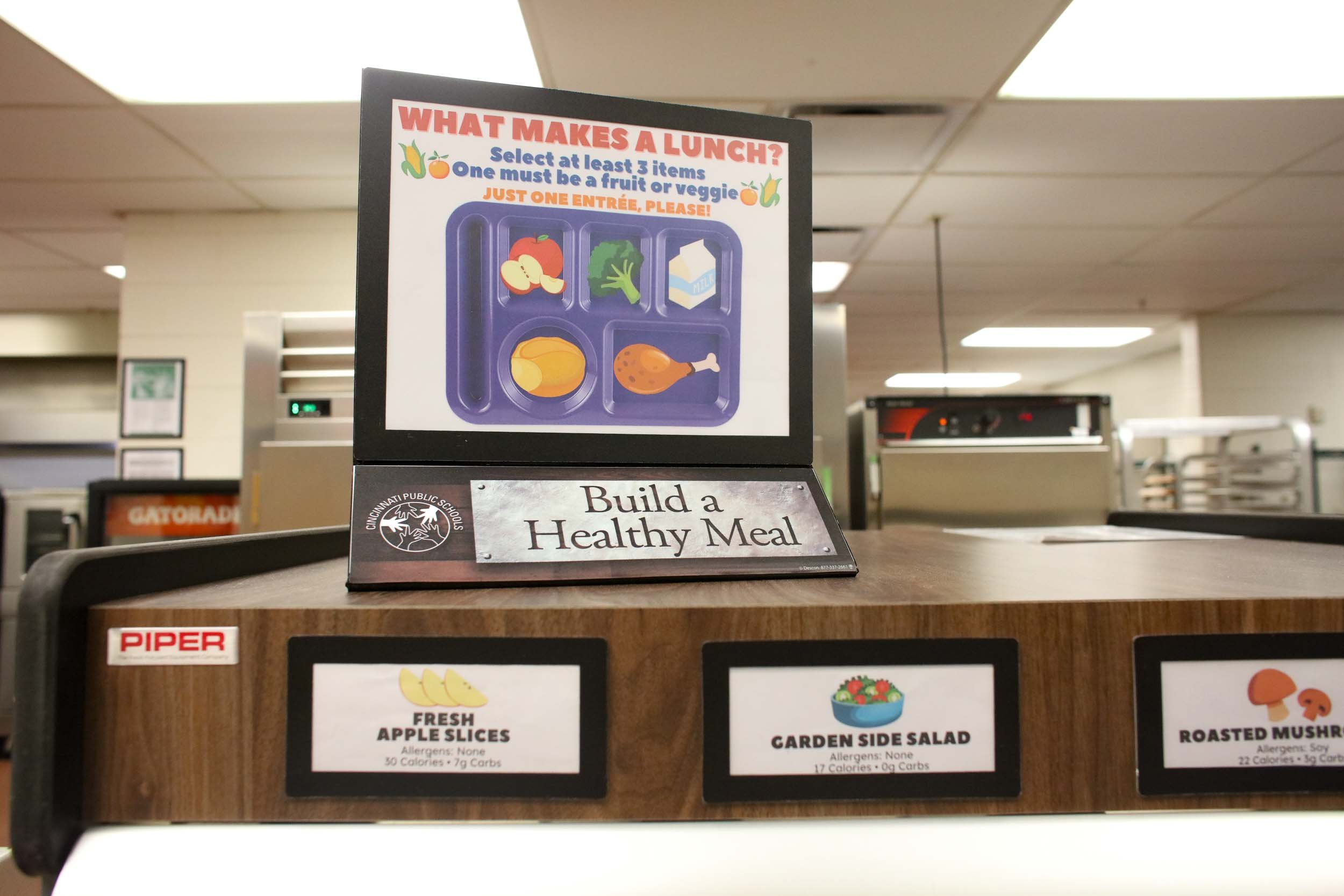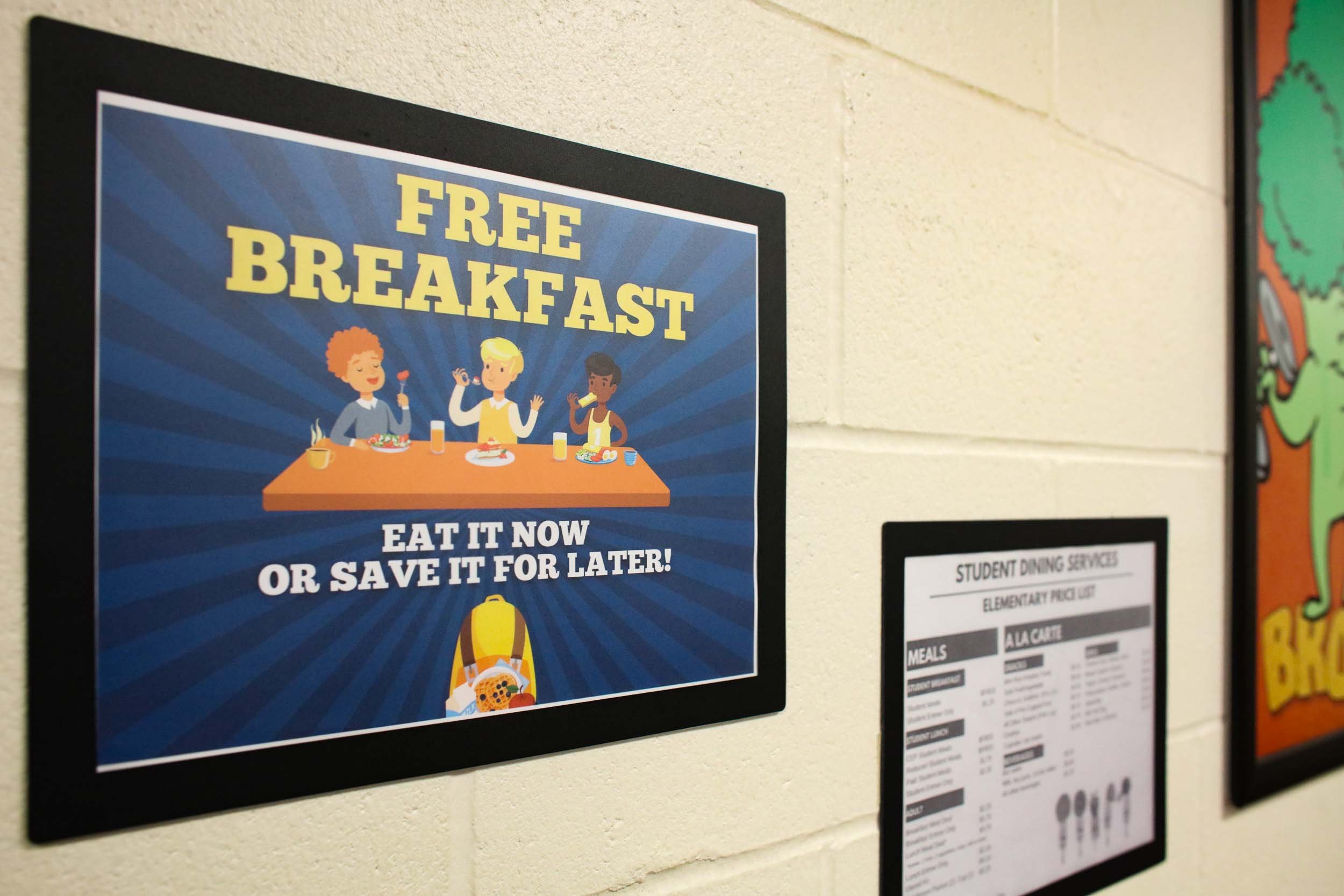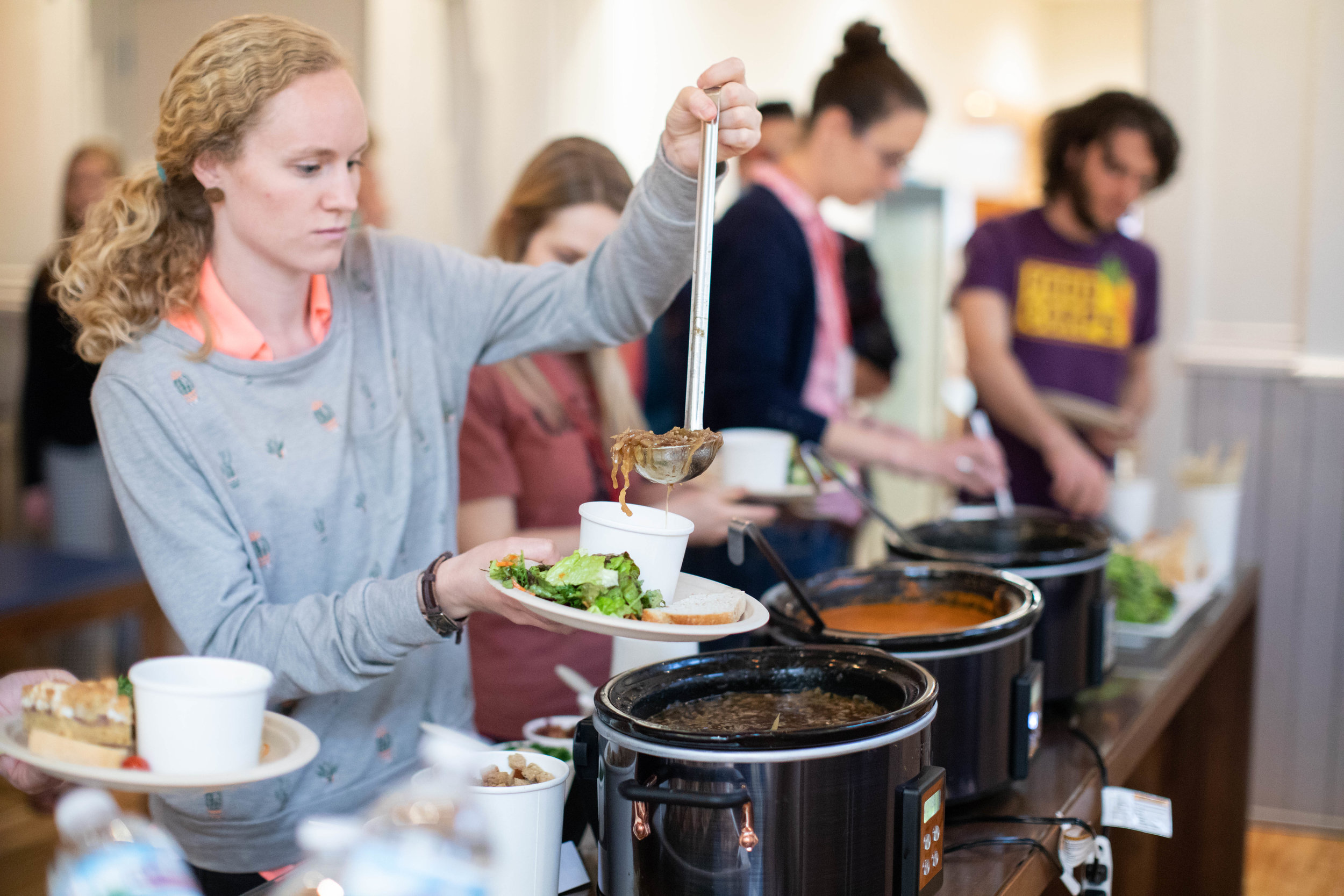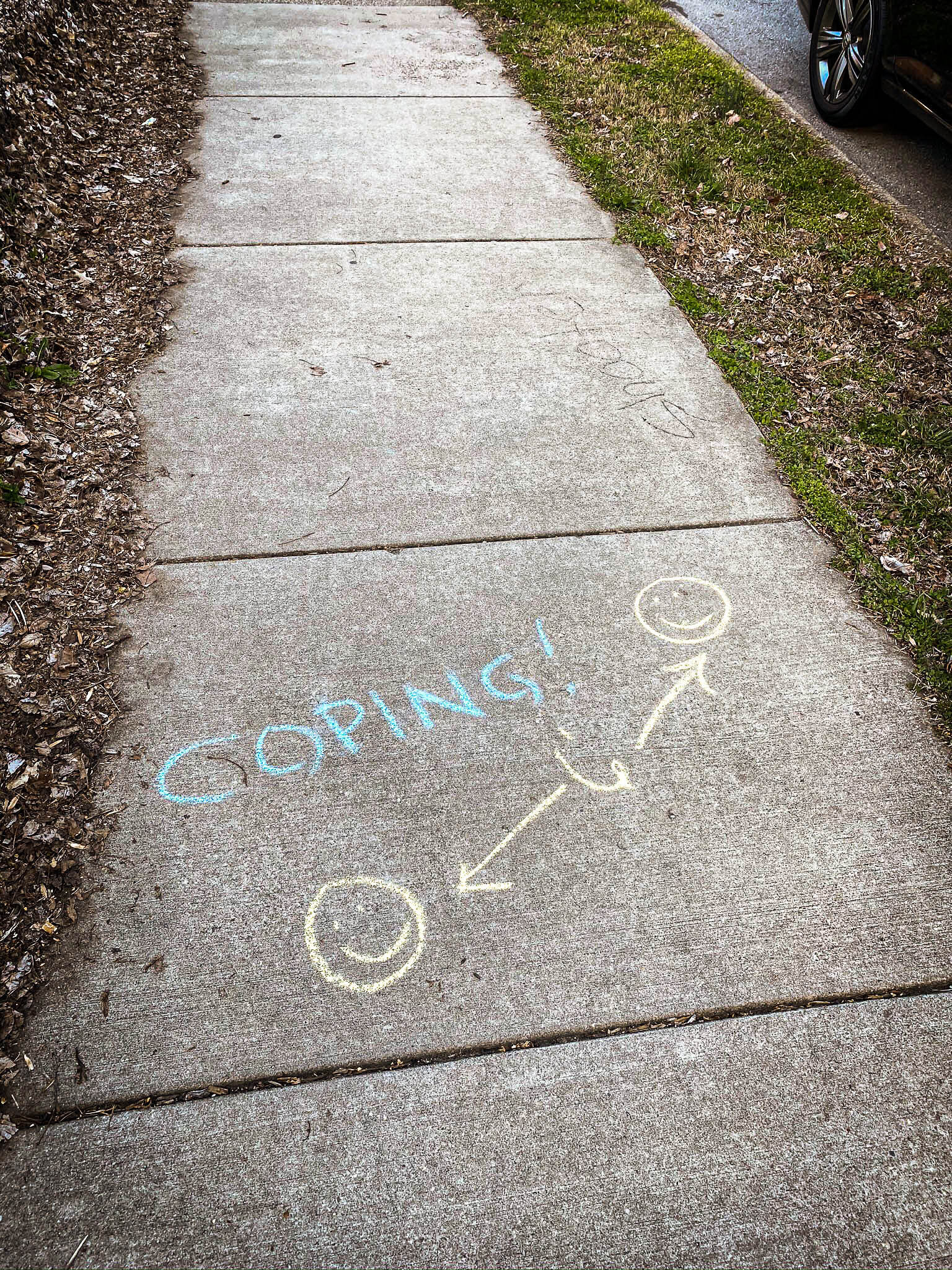Farm to School to Student

Photography Julie Kramer
Nearly two years into the pandemic, we’re still learning about the power and resilience of local food. Cincinnati Public Schools’ nutrition program is another positive story.
Early in March 2020, Jessica Shelly, Director of Dining Services at Cincinnati Public Schools (CPS), got a phone call while attending a national conference on childhood nutrition in Washington, D.C. A CPS school was being shut down due to a possible connection with Covid-19.
“I jumped on the first plane home and from there it was 18-hour days,” Shelly says. “Because we had to figure out how in the world we were going to feed kids without kids being in school.”
By March 17, Shelly and her team had created 24 food distribution sites around the city for students.
Nine months later, Louise Gartner, owner of Fox Tail Farm, LLC, in New Richmond, OH, had heads of green leaf lettuce that needed to be harvested, but no restaurant buyers. So a new buyer came along—CPS—and put them in produce boxes destined for food distribution sites.
Stories about the pandemic are often of great loss; those who love and work with food know this all too well. But in this story there are silver linings: partnerships and collaborations that proved immense, work over and beyond in the name of food access and equity, and the lasting power of local food on the local economy.
FEEDING 35,500 KIDS DAILY
In a normal school year, CPS serves around 6 million meals and spends about $7 million on food. Child nutrition programs in public school districts are called enterprise funds.
“I have to be self-sustaining,” Shelly says. Shelly doesn’t get any money from the district and actually pays the district for everything she uses. The federal government reimburses her for meals, and any surplus is reinvested back into the program. CPS meals are served under the National School Lunch Program, which is run by the U.S. Department of Agriculture (USDA). As such, there are lots of rules and stipulations around what CPS can and can’t do. For example, congregate feeding: Kids have to be together, on site, to consume food.
When the pandemic hit, “the USDA, to their credit, acted swiftly,” Shelly says. Waivers were issued and rules like congregate feeding were paused. Waivers also allowed CPS to provide weekend meals and meals during school breaks.
The USDA also awards grants, including one that CPS benefits from called the Fresh Fruit and Vegetable Program.
During the pandemic, the USDA issued additional grants, allowing CPS to give out big boxes of fresh produce at food distribution sites. “While other districts were giving out bags of potatoes and onions sourced from anywhere, we specifically tried to find our local farm connections, so that really helped support our local economy,” Shelly says.
Shelly and her team worked with several organizations, including 84.51° and Cincinnati Children’s Hospital and Medical Center, to create a map that matched feeding hubs with the most impoverished parts of Cincinnati while also making sure no CPS student was more than one mile away from access to food.
When Shelly had gaps in her food distribution sites, she called UMC Food Ministry and Freestore Food Bank. When she needed more refrigerator trucks, she called Home City Ice. And when she couldn’t get a waiver to provide adult meals, she called LaSoupe, the acclaimed local food rescue and feeding organization.
“It was a real, honest-to-goodness community collaboration,” Shelly says.
Shelly’s team consists of 328 people and it was they who stood out in rain, heat, and snow throughout 2020, serving meals to students at distributions sites. “One of the unique parts about our family of student dining is that you’ll have someone who will see a child from kindergarten through sixth grade,” Shelly says. “So they’ve seen these kids grow up. They are invested in ensuring these kids are fed. So it was an easy ask for a heavy lift.”
Of note, CPS also provides free breakfast to all students. Pre-pandemic, Shelly says around 60% of elementary students participated, and fewer than 40% of high schoolers. Shelly has long advocated for breakfast in schools to get kids physically and mentally ready to spend the day learning. When students came back to school buildings hybrid and full-time at the end of March this year, kiosks were placed at every single entrance point, with breakfast available for pick-up. Shelly says this was one of several pandemic silver linings.
“Because it’s right there as they walk in, the stigma is gone in terms of them having to walk to the cafeteria,” Shelly says. “Everybody is equal. It’s leveled the playing field.”
BRINGING FARM-FRESH FOOD TO CAFETERIAS
It wasn’t just CPS students and families who benefited from CPS’s efforts to distribute meals across the district. Farmers did, too. Last year CPS spent 52% of its money on local food procurement. But this school year will be different; Shelly is working with a much tighter budget and fewer waivers and grants. “Supply chains are broken, and we’re trying to source wherever and however we can,” she says. “But [in 2020] we probably kept some farmers from losing their businesses and our kids benefitted.”
Even in a normal school year, sourcing local products for CPS takes a lot of collaborative effort. Shelly can’t simply buy food from an area farmer; in the regulatory world of USDA she must rely on her vendors to reach out to local growers for her. What Chefs Want is the official produce vendor for CPS, and Local Food Connection is their partner in sourcing local items.
“This enabled What Chefs Want to add a strong local produce component to their product offering,” says Alice Chalmers, founder of Local Food Connection. “Local Food Connection, now a division of What Chefs Want, works directly with the local farms to aggregate and deliver local produce as an integral part of What Chefs Want’s overall services to CPS.”
“We know we raise good food. And it makes us proud to know that our food is going in the schools.”— Louise Gartner, Owner of Fox Tail Farm
Prior to the 2019–2020 school year, CPS adopted the Good Food Purchasing Program (GFPP), which is billed as “transforming the way public institutions purchase food by creating a transparent and equitable food system built on five core values.”
Those five values, says Anna Haas, Local Food Program Director at Local Food Connection and What Chefs Want, include local economies, environmental sustainability, valued workforce, animal welfare, and nutrition. Public institutions earn points from purchasing from farms or sources that meet certain criteria. Additional points are granted if they can implement value-chain innovation, like guaranteeing a certain volume of purchases to small vendors prior to each planting cycle.
While the Cincinnati School Board unanimously voted in favor of adopting GFPP in January 2019, Shelly says it’s something they had been working toward for a while. Michaela Oldfield, Director of the Greater Cincinnati Regional Food Policy Council, an initiative of Green Umbrella, also notes that GFPP is just one piece of Shelly’s larger picture. CPS’s Clean Label Initiative, improving healthy food access, is another example of Shelly’s food advocacy. “She’s taking on such an amazing leadership role in Ohio and nationally with what she’s doing around foodservice for kids,” Oldfield says.
PANDEMIC PARTNERSHIPS
In spring 2020, Haas says Local Food Connection called every farmer partner and let them know that buyers would likely be changing their plans. In many cases, farms (including Fox Tail) pivoted and began offering CSAs and online ordering.
The biggest problem, Haas says, was unpredictability. Local Food Connection needed to find new ways to help farms place items they were unable to sell to restaurants, for example, that were shuttered early in the pandemic. Those solutions included new buyers such as CPS, and farms buying from one another to help meet the growth in their new CSA or direct-to-consumer sales.
Once CPS secured USDA waivers and grants allowing produce boxes, Local Food Connection and What Chefs Want secured locally grown grape and cherry tomatoes, apples, carrots and carrot coin snacks, sweet potatoes, fingerling potatoes, baking potatoes, cabbage, red and yellow onions, butternut squash, spinach, and salad greens—including that lettuce from Fox Tail Farm.
By summer 2020, Gartner says she was giving away as much produce as four different charities would take. Come winter, Haas asked Gartner if there was anything she needed help selling. Gartner said yes: lettuce. CPS came through as the buyer.
“It was a way to help others and be helped ourselves at the same time,” Gartner says. “We’re just a small drop in the ocean. But their efforts to include us, it’s huge. And their willingness to work with the small farms, and take what they can from us and backfill with the bigger farms, it makes us feel appreciated. It also helps us with cash flow, planning—financially, the bigger picture. And it makes us proud to know that our food is going in the schools. We know we raise good food. It’s organic. And it’s feeding kids, and some of it’s going to the homes of those kids. That makes me feel really proud and that makes our crew feel really proud.”
In terms of growth, in the 2018–2019 school year, Haas says Local Food Connection and What Chefs Want worked with two local produce vendors for CPS. For the 2021–2022 school year, that number has jumped to 18. (Haas notes CPS has relationships with many other local vendors; these numbers reflect those with whom Local Food Connection works directly.)
PURCHASING POWER
As a consequence of Covid-19, Shelly lost between $6 and $7 million dollars during the pandemic.
She’d spent 10 years as director, getting student dining services not only out of the red but comfortable with a rainy day fund (which proved life-saving during the pandemic). It also allowed for the occasional mangoes, tamales, or tilapia for lunches, vegetarian options, or a new piece of equipment. “I don’t have that luxury anymore,” she says.
What’s especially frustrating, she adds, is that urban, and socially and economically poor districts lost a lot of money while many affluent suburban districts made money. Why? Because the latter ordinarily don’t have to feed students who quality for free meals. “But everybody got to eat for free and [districts] got reimbursed for free rates,” Shelly says. “I don’t know how to fix that inequity.”
Oldfield says the Food Policy Council is working at the state level to increase spending flexibility for school foodservice directors like Shelley, who need bigger budgets and more purchasing options.
In addition, Oldfield is recruiting anchor institutions to support CPS. Other cities, she says, have gotten their schools to buy local while also enlisting convention centers, hospitals, sports arenas, and universities. The institutions can bid collectively, which lowers prices.
People are often surprised to learn that in-season local items are comparable in cost to non-local items, says Sarah Re, Vice President of Sales of K–12 schools at What Chefs Want. “Having partners drives the cost down.”
Haas agrees: “There are a few fruits and vegetables where this factor allowed local to match or even beat non-local prices while still making sure that the farms are receiving the amount they are asking for. Local does not have the same shipping, handling, and freight costs.”
Ongoing national supply chain disruption has further leveled the playing field for local items. Re says that as of early summer, quoted shipping rates ran to $12,000 a truckload to deliver produce from the West Coast to Ohio. Pre-pandemic it was close to $6,000, which was considered high.
Already other local school districts have benefitted from easier access to local food thanks to CPS’s buying power, Haas says. For example, a collective purchasing plan lowered the cost of local apples this year for CPS and partner districts in the region. “CPS’s purchasing power means that a farm can grow, pack, and drop off more of a single item at one time, which decreases their fixed costs. Sometimes it’s enough to make it worth it for them to decrease pricing in response to increased volume.”
“It is so easy for us working from this space to want the world,” Haas says. “We want everything to be local. We have these huge goals.” Success, Haas, says, has come from farmers, Local Food Connection, What Chefs Want, and buyers like CPS listening and trusting each other, and knowing it’s impossible to do it all. “You don’t have to shoot for the moon,” Haas says. “You can take it step by step. We have seen so much progress and built so much trust together because of that.”



Kara is a freelance writer and editor, a managing editor at Lost Art Press, and a contributing editor at Writer’s Digest magazine. She lives with her family in Fort Thomas, KY. You can read more of her work at PleiadesBee.com.





